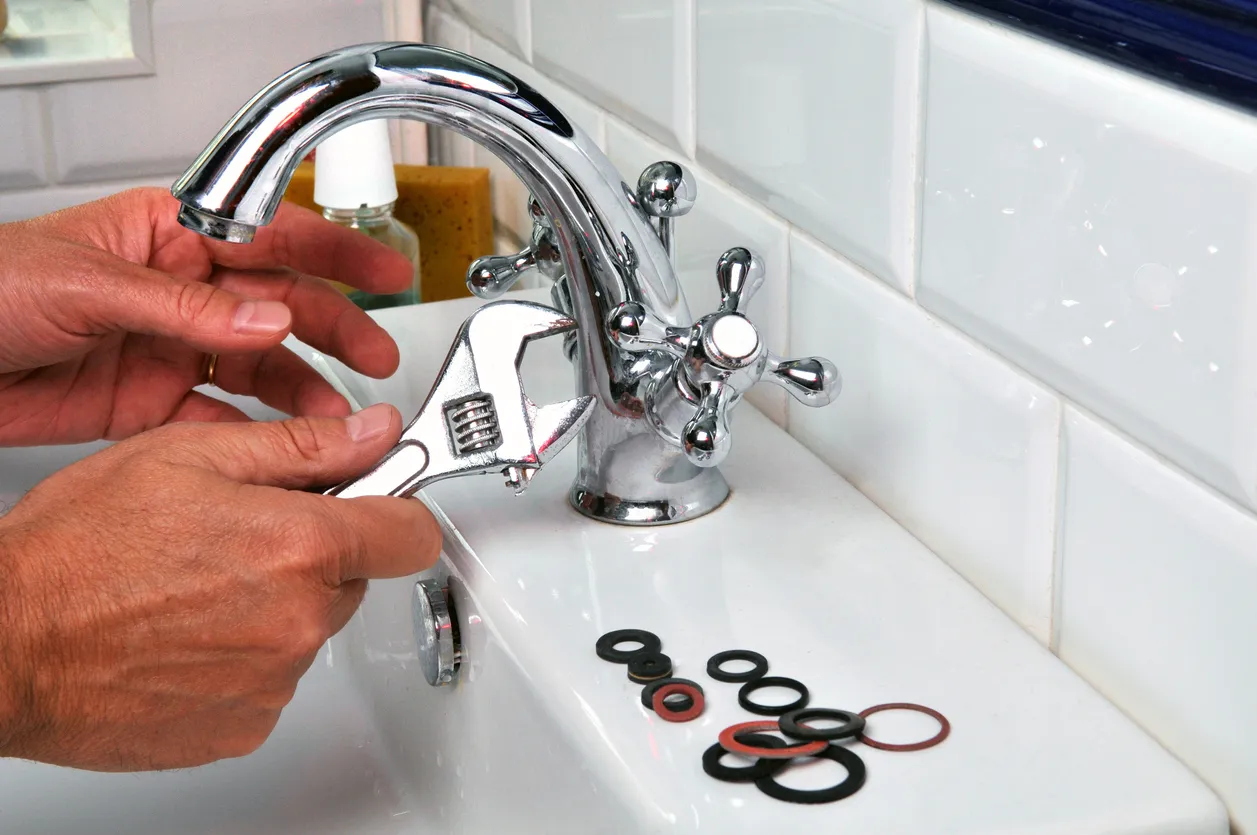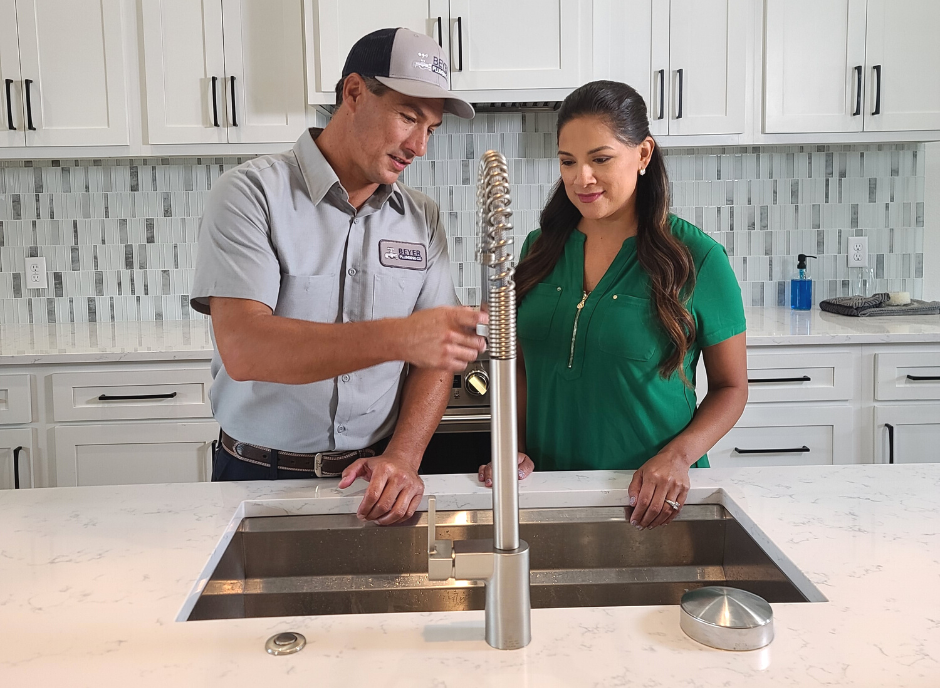In this article down the page you will find some decent points regarding Why It's Important to Fix Leaky Faucets.

Trickling taps might look like a small hassle, yet their influence exceeds just the aggravation of the audio. From wasting water to sustaining unneeded monetary costs and wellness dangers, disregarding a trickling tap can cause various effects. In this post, we'll delve into why it's crucial to address this usual family issue without delay and successfully.
Wastage of Water
Ecological Effect
Dripping taps contribute significantly to water waste. According to the Epa (EPA), a single tap trickling at one drip per second can squander greater than 3,000 gallons of water each year. This not just pressures water resources yet also impacts ecosystems and wildlife based on them.
Financial Expenses
Raised Water Costs
Beyond the ecological influence, leaking faucets can inflate water costs considerably. The gathered waste in time translates right into higher energy expenses, which could have been stayed clear of with timely repairs.
Possible Property Damages
Furthermore, long term dripping can bring about damage to components and surfaces bordering the faucet. Water buildup can cause staining, corrosion, and also structural concerns if left ignored, resulting in extra fixing prices.
Health Concerns
Mold and Mold Development
The consistent visibility of dampness from a dripping faucet creates a suitable environment for mold and mildew development. These fungis not only endanger indoor air high quality but also position health and wellness dangers, particularly for individuals with breathing conditions or allergic reactions.
Waterborne Conditions
Stationary water in trickling taps can come to be a breeding ground for bacteria and other pathogens, increasing the risk of waterborne conditions. Impurities such as Legionella bacteria grow in stationary water, potentially resulting in serious ailments when ingested or breathed in.
Do it yourself vs. Expert Repair work
Pros and Cons of Do It Yourself Fixing
While some may try to deal with a leaking tap themselves, DIY repairs feature their own collection of difficulties. Without appropriate knowledge and devices, do it yourself efforts can exacerbate the issue or lead to insufficient repairs, prolonging the problem.
Advantages of Employing a Specialist Plumber
Hiring a specialist plumber guarantees that the underlying source of the trickling faucet is attended to effectively. Plumbing professionals have the proficiency and devices to detect and fix tap problems successfully, conserving time and decreasing the danger of further damage.
Step-by-Step Overview to Taking Care Of a Dripping Tap
Tools Called for
Before attempting to take care of a trickling faucet, gather the necessary devices, consisting of an adjustable wrench, screwdrivers, replacement components (such as washers or cartridges), and plumber's tape.
Typical Faucet Issues and Their Solutions
Recognize the kind of faucet and the details problem causing the drip. Usual troubles consist of worn-out washers, rusty shutoff seats, or malfunctioning O-rings. Refer to manufacturer guidelines or on-line tutorials for step-by-step assistance on repairs.
Preventive Measures
Routine Upkeep Tips
To stop trickling taps, do routine upkeep such as cleaning aerators, evaluating for leakages, and replacing damaged parts promptly. Furthermore, consider mounting water-saving devices or updating to more effective components.
Value of Prompt Services
Attending to dripping faucets as quickly as they're noticed avoids additional water wastage and potential damage, eventually conserving both water and cash in the future.
Impact on Building Worth
Perception of Well-Maintained Home
Preserving a property in good condition, including addressing upkeep problems like leaking faucets, boosts its perceived worth and desirability among possible buyers or occupants.
Impact on Resale Value
Qualities with well-maintained plumbing components, including faucets, command higher resale values in the property market. Resolving trickling taps can contribute to a positive perception throughout property inspections and settlements.
Ecological Responsibility
Private Payment to Preservation
Taking responsibility for repairing leaking taps straightens with more comprehensive initiatives toward water conservation and ecological sustainability. Every individual's activities jointly make a substantial effect on maintaining priceless resources.
Sustainable Living Practices
By prioritizing timely repair work and taking on water-saving habits, individuals add to lasting living techniques that profit both existing and future generations.
Verdict
Resolving a leaking faucet goes beyond mere convenience; it's a crucial action toward conserving water, lowering economic expenses, and safeguarding wellness and building. Whether with DIY fixings or professional assistance, acting to repair leaking taps is a little yet impactful method to advertise accountable stewardship of sources and add to a much healthier, a lot more lasting future.
How to Fix a Leaky Faucet: Step-by-Step Repair Guide
A leaky faucet may seem like a simple annoyance, but if it's not fixed promptly, that leak could cost hundreds to potentially thousands. From water damage to mold, mildew, and high water bills, even a tiny leak can be catastrophic if left unattended. Damage like this can even affect the overall value of your home, so it's important to take the right approach for leaky faucet repair. You may need the help of a plumber in some cases, but we've got a few tips you can try on how to fix a leaky faucet before calling the pros.
Four Faucet Types
When you're learning how to fix a leaky faucet, the first step is knowing what kind of faucet you're working with! There are four common types.
Cartridge Faucets
Cartridge faucets come in one- or two-handled varieties. In one-handled cartridge faucets, hot and cold water combines in a single cartridge. In the two-handled versions, hot and cold water are controlled separately and mixed in the faucet.
Ball Faucets
Ball faucets have a single lever you push up and down to adjust the pressure and rotate to change the temperature. A slotted metal ball controls the amount of water allowed into the spout.
Compression Washer Faucets
They're the oldest type of faucet, but they're still used in many homes — especially older ones. Compression faucets have two separate handles that, when turned, raise or lower the washer that seals a water valve. This valve stops water from flowing through the faucet when it is turned off.
Disc Faucets
Disc faucets rarely need to be repaired due to their maintenance-free design. The water flow is controlled by two discs — the upper one raises and lowers against a fixed lower disc, creating a watertight seal. If your disc faucet starts leaking, you may need to replace the seals or clean residue buildup from the inlets.
Fixing a Leaky Faucet
Step 1: Turn Off the Water
Whether you're learning how to fix a leaky bathtub faucet or how to fix a leaky kitchen faucet, always turn off the water supply to your working area when you're fixing a leak. The last thing you want is a flood added to your list of things to fix.
Look for the shutoff valves below your sink or around the tub and turn them clockwise to stop the water flow. If your faucet doesn't have shutoff valves, you may need to turn off the water for the whole house. Check to make sure it's off by turning the faucet on. If nothing comes out, you're ready to start the repair.
Step 2: Take Apart the Faucet
How you disassemble your faucet depends on the type of fixture you have. You can use a flathead screwdriver to remove the caps on top of the handle or handles for cartridge and compression faucets. Inside, you should see handle screws. Unscrew these with a screwdriver to remove the handle.
Disc- and ball-style faucets will typically have an inlet screw near the handle, and removing that will reveal the interior of the faucet.
Detach the Valve Stem
For cartridge- and compression-style faucets, you'll see the inner valve stem or cartridge once you remove the faucet handles. If you have a compression faucet, unscrew the brass valve stem. If you have a cartridge faucet, pull out the cartridge. If your cartridge has been in place for a while, it may require some tools or extra force to remove it due to mineral deposits.
Examine and Replace Parts
Once you've removed the parts, check them out to confirm what needs to be replaced. You may see corroded rubber washers, O-rings, stems, or cartridges. On a ball-style faucet, check the seats and springs for damage.
If you need to repair a leaky disc faucet, check the inlet and seals on the lower disc.
Once you determine what parts must be replaced, visit your local hardware store. Bring the damaged parts with you to ensure you can purchase the correct components to replace them.
Clean Valves and Faucet Cavity
If you've removed a stem or cartridge, you may notice mineral buildup in the faucet's threads. Use white vinegar to clean the valve seat by soaking it for a few minutes, then scrub it away with a soft toothbrush and rinse with warm water. You can also clean the interior of the faucet in the same way.
Reassemble the Faucet
Once your faucet is cleaned and the required parts have been replaced, it's time to reassemble it. Put the pieces back together and slowly turn the water supply back on. Doing this slowly is crucial because too much initial water pressure can damage the new hardware you've just installed.
https://homewarranty.firstam.com/blog/how-to-fix-leaky-faucet

We were shown that report about 4 Common Reasons for a Leaky Faucet through a friend on our other domain. So long as you appreciated our blog posting please do not forget to share it. Thanks a bunch for being here. Don't hesitate to check up our website back soon.